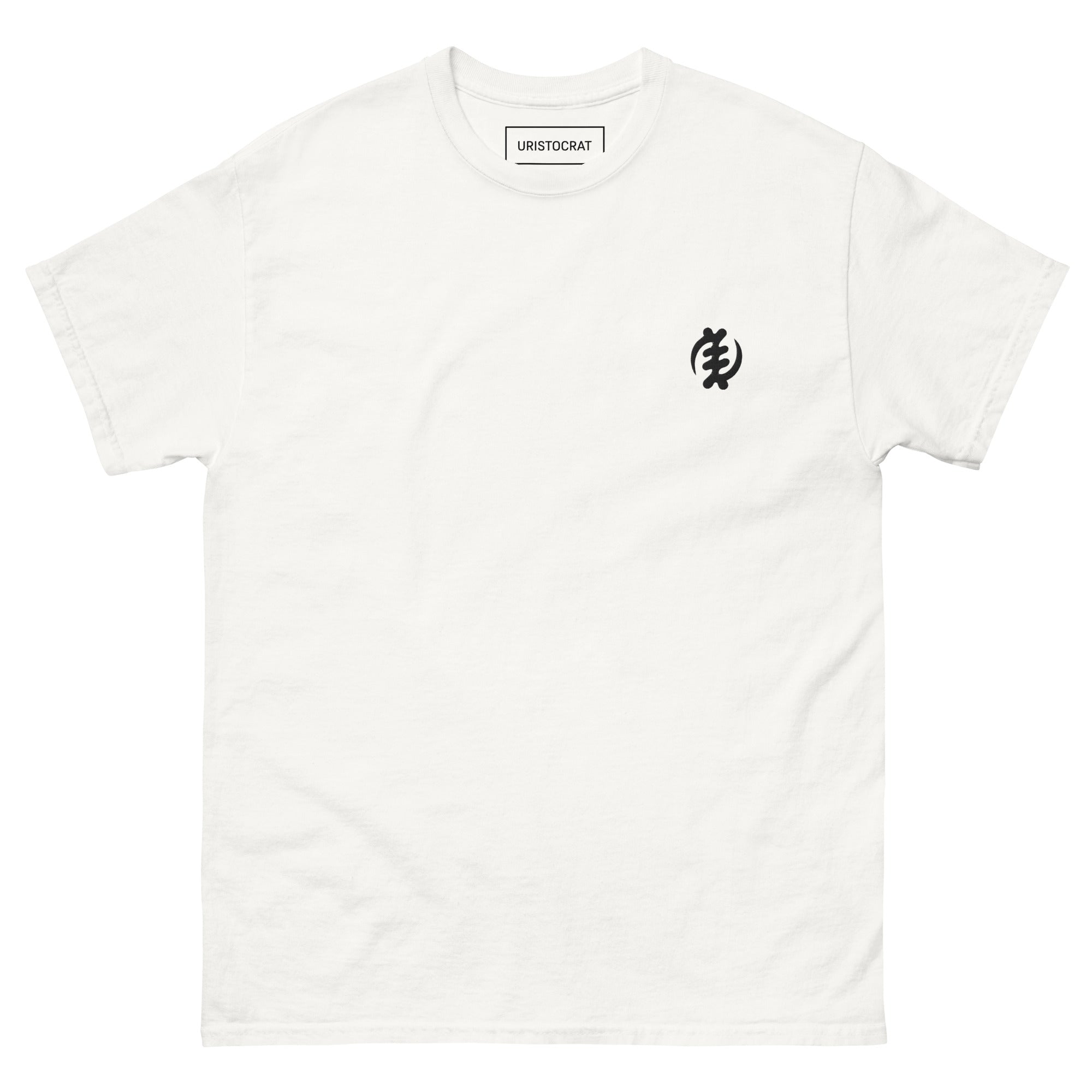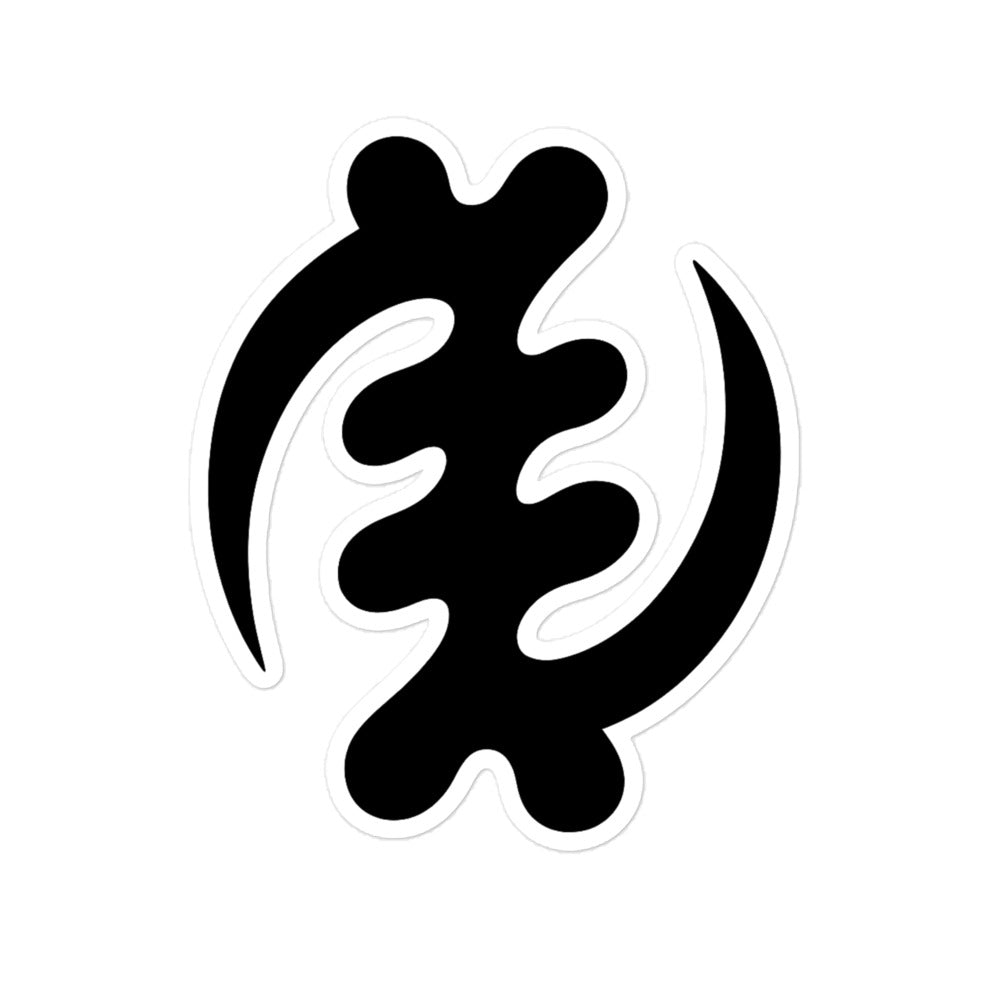Gye Nyame: The Supreme Adinkra Symbol
"Except for God" / "Only God"

Gye Nyame
[DJEH nyah-meh] or [Gee-yeh Nyah-meh]
Origins and Historical Significance
Gye Nyame stands as the most important and widely recognized of all Adinkra symbols in Akan culture. According to multiple scholarly sources, this symbol expresses the deep faith the Akan people have in the Supreme Being and has become an icon representing the omnipotence of God.
The symbol's origins trace back to the Akan people of Ghana, specifically emerging alongside the broader Adinkra tradition around the early 1700s or before. Historical evidence shows that Adinkra symbols, including Gye Nyame, were originally featured as prints on cloth worn by royalty during important ceremonies.
"This unique and beautiful symbol is ubiquitous in Ghana. It is by far the most popular for use in decoration, a reflection on the deeply religious character of the Ghanaian people."
— West African Wisdom: Adinkra Symbols & Meanings
The name "Gye Nyame" literally translates to "except God" or "only God" in the Akan language, conveying the fundamental belief that nothing in existence surpasses the power, wisdom, and authority of the Supreme Being. In Akan cosmology, God (Nyame) is omnipotent, omnipresent, and omniscient.
Deep Symbolic Meaning and Philosophy
Gye Nyame encompasses multiple layers of spiritual and philosophical meaning that have sustained Akan communities for centuries:
Divine Supremacy
The symbol expresses the omnipotence and supremacy of God in all affairs, acknowledging that divine will supersedes all human ambition and earthly power.
Humility & Faith
It serves as a reminder of the necessity of God's intervention in difficult situations that transcend the ability of man to resolve, promoting humility before the divine.
Protection & Immortality
The symbol connects to the Akan proverb "Nyame bewe ansa na mawu" (God will die before I die), expressing the belief in divine protection and spiritual immortality.
Universal Presence
Gye Nyame encapsulates the faith of an African people who see God's involvement in every aspect of human life, from daily activities to major life events.
According to research by Eglash, Bennett, Lachney, and Bulley, the knobs or lumps down the middle of the symbol represent the knuckles on a fist (a symbol for power), while the curves at each end are abstractions representing life itself.
Traditional Applications and Cultural Context
Ceremonial Textiles: Traditionally used on Adinkra cloth worn during funerals and other very special occasions by royalty and spiritual leaders. The symbol provided spiritual comfort and affirmed beliefs about divine authority over life and death.
Royal and Religious Use: The symbols were initially used exclusively by royalty and spiritual leaders during significant ceremonies, including funerals, to signify sorrow and bid farewell to the deceased.
Artistic and Decorative Applications: The symbol appears on various items, including pottery, stools, gold weights, walls, and other architectural features. It's also carved on stools for both domestic and ritual use.
Musical Instruments: The Gye Nyame symbol appears on traditional musical instruments such as the djembe and ceremonial drums, conveying spiritual significance during cultural and religious ceremonies.
Cultural Respect and Authenticity
Given its profound spiritual significance, Gye Nyame should be approached with genuine respect and understanding of its sacred meaning in Akan culture. It represents core beliefs about the divine that have sustained communities for generations.
Contemporary Recognition and Usage
The widespread adoption of Adinkra symbols, especially among African Americans and other Africans across the diaspora, has solidified their status as icons of African symbolism and philosophy.
Official Recognition: Gye Nyame appears on Ghana's highest denomination banknote, the 200-cedi note, positioned in the bottom left corner. This official use demonstrates the symbol's continued cultural importance.
Educational Institutions: Many Ghanaian universities use Adinkra symbols in their coats of arms and emblems, with the University of Cape Coast notably incorporating Gye Nyame in their logo.
Commercial and Cultural Applications: Tourism has led to new departures in the use of the symbols on items such as T-shirts and jewelry, though these modern applications should maintain respect for the symbol's spiritual significance.
Modern Applications in Daily Life
Today, Gye Nyame continues to provide spiritual guidance and cultural connection for people worldwide:
Personal Meditation & Prayer
Use as a focal point for meditation or prayer spaces, serving as a reminder of divine supremacy and the importance of surrendering control to higher wisdom.
Home and Sacred Spaces
Display in homes as wall art or decorative elements, particularly in spaces dedicated to reflection, prayer, or family gathering, maintaining a connection to spiritual principles.
Educational and Professional Contexts
Incorporate in educational materials or professional environments where integrity, humility, and ethical leadership are valued, serving as a reminder of accountability to higher principles.
Cultural Preservation
Cultural institutions such as museums and educational organizations work to educate the public about the symbol's meaning, origins, and cultural relevance.
Responsible Usage Guidelines
Cultural Education: Always accompany the use of Gye Nyame with education about its Akan origins and spiritual significance. Understanding the symbol's cultural context is essential for respectful usage.
Authentic Representation: When displaying the symbol, ensure accuracy in design and provide proper attribution to Akan culture and Ghanaian heritage.
Spiritual Reverence: Recognize that Gye Nyame is not merely decorative but represents profound spiritual beliefs. The symbol should be used in ways that honor rather than commercialize its sacred meaning.
Community Consultation: When incorporating the symbol into significant projects or public displays, consider consulting with Akan cultural experts or Ghanaian community representatives.
"Saturated with meaning, Adinkra have come to represent the richness of Akan culture in particular and African culture in general. They serve as a concise way to convey deep truths in visual form."
— Adinkra Symbols & Meanings
Sources and References
- Adinkra Symbols & Meanings. "Gye Nyame." AdinkraSymbols.org, September 15, 2020.
- Wikipedia contributors. "Adinkra symbols." Wikipedia, July 24, 2025.
- Tribalgh. "Adinkra Symbol Gye Nyame: Meaning and Significance." August 4, 2024.
- West African Wisdom. "Adinkra Symbols of West Africa: Gye Nyame." Adinkra.org.
- Passion & Adinkra. "Adinkra Symbols."
- Piedras Haseya. "Adinkra Symbols."
- Ghana Rocks. "A Regional Guide to Ghanaian Crafts." AfricanCraft.com.
- Eglash, R., Bennett, A., Lachney, M., & Bulley, W. (Referenced in Adinkra symbols research)
Uristocrat Store


Get Gye Nyame Symbol Files
Download high-quality versions for your projects. Uristocrat membership required.






